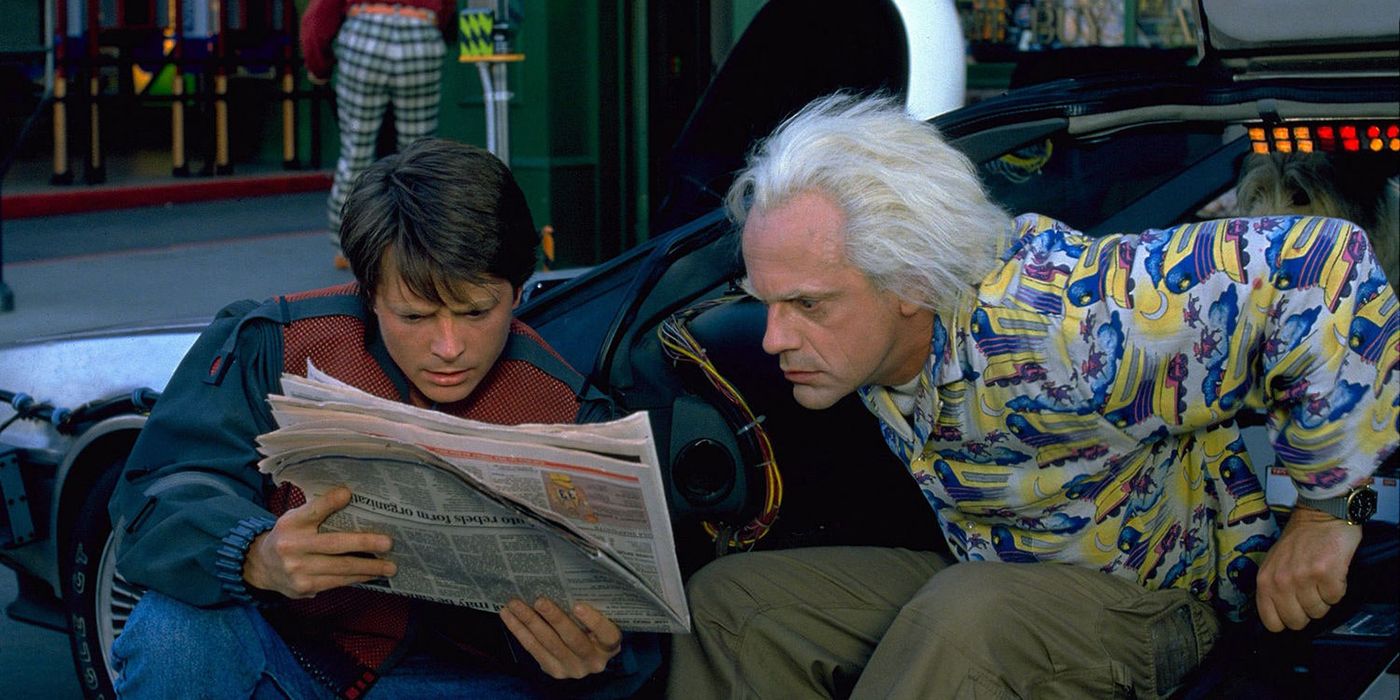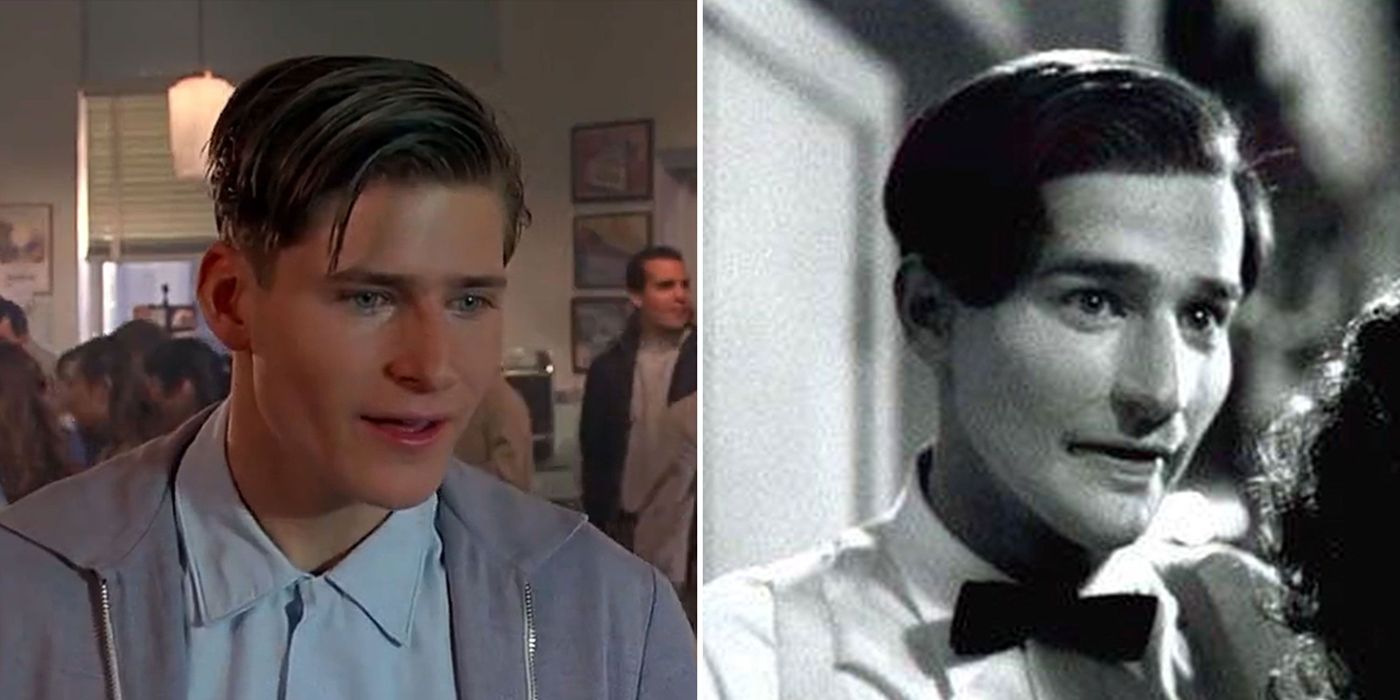Arguably one of the most celebrated and successful franchises of all time, Back to the Future is as iconic a Hollywood product as it gets. It was also a cultural phenomenon in the Eighties. Famously, it featured the ill-fated DeLorean as its time-traveling vehicle of choice, coined the hilarious phrase “one point twenty-one gigawatts!” and made the names of several now household celebrities like Oscar-winning director Robert Zemeckis, actors Michael J. Fox, and Christopher Lloyd. Its impact on American culture reaches far into our own time being the basis for the monumental Adult Swim animation Rick and Morty. But not everything was on the level in the wake of the first movie’s success. The franchise is bruised by the infamous and controversial use of actor Crispin Glover in Back to the Future Part II. Glover played Marty’s father George McFly in the first movie.
Combined, the Back to the Future franchise has made nearly 1 billion dollars worldwide. It has spawned video game adaptations, cartoon series, several theme park attractions, and recently even a musical. Back to the Future Part II was released in 1989 and was one of the first movies to film two sequels back-to-back. This was a practice that would become much more common in the twenty-first century with movie series like Harry Potter, the Hunger Games and certainly much of the MCU. Mission Impossible 7 and 8 were originally planned to be filmed in this way, but due to the COVID pandemic that schematic had to be scrapped. Back to the Future 2 was not as successful as the first outing, but still did a healthy $330 thousand dollars. It cleverly interweaves scenes from the previous movie into the narrative, having Marty watch himself interact with his parents in the 1950’s and attempt to maintain the delicate and fragile timeline.
The Controversy
The public will never know the truth behind why exactly Crispin Glover did not continue in the franchise after the enormous success of the first movie. Some claim it was due to a disagreement over his salary. Others, that Glover chose not to reprise his role because he did not believe in the commercialistic, pro-materialist message lauded by the conclusion of the first movie. Glover insists that the end of Back to the Future celebrates the acquisition of material wealth for the sake of happiness rather than the pursuit and enjoyment of true love. After Marty McFly’s adventure in the 1950’s, he feels like his life is improved because his parents are now rich, and he owns a brand-new truck.
No one comments on the enduring love between his parents (as they were more likely to divorce or separate due to their busy successful careers than to stay together) or Marty’s reunion with his girlfriend from the present time. Regardless, and again, this part will never be known to the public, whether done for continuity’s sake (dealing with time travel often causes this sort of headache) or to stiff Crispin Glover, the producers chose to recast Glover's role with a different actor who resembled him, Jefferey Weissman. Worse, and fervently contentious, they added prosthetics to Weissman and deliberately passed him off as if Crispin Glover still portrayed the character in the movie.
The Lawsuit
In response, in 1990, Crispin Glover sued Universal Pictures for violating his right of publicity. Essentially, the producers of Back to the Future 2 used Glover’s likeness without his permission or compensation. Had they simply recast him, as they did with Marty’s girlfriend, there would be no claim. Because their intentions were to make it seem as if he was in the movie, even though he was not, they were treading on his ability to profit from his own image.
It is a visual plagiarism, sort of, to simplify the argument. The lawsuit never went to trial because the studio and Glover agreed to a settlement, but the precedent of this case has gone on to support the right of publicity for other performers, like Gwen Stefani, when the band No Doubt sued Activision over the nonconsensual use of their likeness in the game Band Hero.
The Legacy?
This entire argument becomes even more relevant with today’s technological ability to use CGI to recreate the faces of deceased performers. Disney famously hired actors to portray the roles of Princess Leia and Grand Moff Tarkin in Star Wars: Rogue One. These actors resembled Carrie Fisher and Peter Cushing, but had their faces replaced with computer replicas. A large amount of deepfakes have sprung up from this same technology, which, depending on the user, could be used for ill gain or for good (such as the endless YouTube comedy channels, including one made by the creators of South Park). Several questions of compensation and permission have yet to be legally answered. The use of holograms for stage performances has become another point of contention in this topic, as they have been used to “revive” dead musicians for present-day concerts. Anyone from Elvis to Tupac have been restored to the stage via these holograms.
Unintentionally, Back to the Future Part II has become a watershed moment in Hollywood legal precedent. And the next time one watches the movie purely for the sake of enjoyment, the sneaky face swap of Jeff Weissman to imitate Crispin Glover is unmissable. That action has become part of a growing discussion on the use of celebrity likenesses, for the living and the dead.


